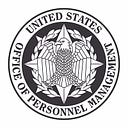Empowering Federal Workers with their Collective Voice
President Biden often says that a job is about more than a paycheck — it’s about dignity.
The ability to provide for one’s family and pursue a rewarding career is bolstered by the right to organize. Organizing empowers workers with their collective voice and promotes dignity and respect in the workplace. That’s why OPM is committed to helping the Biden-Harris Administration write a new chapter of engagement with federal labor unions through our work with the White House Task Force on Worker Organizing and Empowerment. That work continues today with three additional pieces of guidance to agencies.
This guidance outlines actions for agencies to take to increase unions’ access and ability to communicate with federal employees; streamline the process for becoming a dues-paying member; and provide direction for agencies to better train managers and supervisors about neutrality in union organizing campaigns.
These steps build upon earlier guidance released last October intended to remove obstacles to exposure of both employees and applicants to unions, as well as improve communications with federal bargaining unit employees. Those policies promote inclusion of bargaining unit status and union affiliation in every job announcement, call for more opportunities for unions to connect with new hires during the onboarding process, and help provide opportunities for every federal employee to engage with their union.
With today’s release, OPM has now released five of the OPM-authored strategies included in the White House Task Force on Worker Empowerment Report. It comes after more than a year of hard work at OPM to identify policies, practices, and programs that could bolster worker power and collective bargaining. We believe that every federal employee should know exactly what their bargaining rights are, how to contact their union, and where to find this information at any point in time.
OPM’s guidance is intended to remove barriers to organizing in the federal sector. More than half of non-postal Executive Branch civilian workers (nearly 1.25 million people) are represented by some 2,000 bargaining units, but only a third of them are dues-paying members. This strains the ability of federal unions to provide fair representation to all of their bargaining unit members, regardless of whether they pay dues or not. By removing barriers that impede unions’ ability to organize, represent bargaining unit employees, and inform civil servants about their collective bargaining rights, the federal government is serving as a model employer for others to see how strong labor rights and a productive workforce go hand-in-hand.
Worker organizing is a labor issue, but it also touches on many other issues — it’s an equity issue; it’s a social justice issue; and it’s a gender and racial justice issue. As I had once advocated as executive director of an Asian American women’s advocacy organization, many low-wage occupations that lack worker protections are held by people of color and historically disadvantaged communities. Increasing worker organizing gives these workers a seat at the table to demand fair pay and safe working conditions.
The Biden-Harris Administration is committed to ensuring every federal job is a good job, and respecting collective bargaining rights is one way we’re doing exactly that. OPM is proud to help lead these efforts, which not only empower federal workers, but also make the federal workforce a more attractive place in this competitive labor market. We want every federal employee to feel respected and appreciated for their service to the American people.
-Kiran Ahuja, Director of the U.S. Office of Personnel Management
